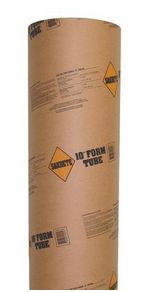Coulomb Theory
As I have probably mentioned a few times, I learn new stuff every day. Sometimes, what I learn causes me to rethink my prior positions on subjects. I’d like to believe this is a good thing, as it keeps me from being so rigid.
 I’ve always had a bad attitude toward the use of sonotubes placed in holes of post frame buildings. People’s thought is generally – I have dug a very big hole, I don’t want to use so much concrete in the hole, so I will put a sonotube in the hole, and backfill around the tube.
I’ve always had a bad attitude toward the use of sonotubes placed in holes of post frame buildings. People’s thought is generally – I have dug a very big hole, I don’t want to use so much concrete in the hole, so I will put a sonotube in the hole, and backfill around the tube.
I’d always looked upon this rather like the ancient Roman adage, “It’s all fun and games until someone loses an eye”. To me, it was all fun and games until the pole building column and the sonotube get sucked out of the ground like a cork from a champagne bottle.
What started me on this particular trek was doing frost heave research. I’d read some work done by engineer Harris Hyman, who appears to be the expert on the subject.
I am reading along in one of his papers, where he is talking first about anchoring a post to an oversized footing to prevent uplift. The idea is that the weight of the earth above the footing will hold the post down, and if the footing is sufficiently deep (like below the frost line), no heaving will occur.
Well, Harris has another idea:
“There is another option that may have more promise for post construction: Forget the footing, but put the post in deep enough to resist lifting by the friction of the earth. The earth exerts a lateral – sideways – force against the surface of a wood post or sonotube. Friction between the earth and the post causes the post to move with the earth. As the post goes deeper, the lateral force of the earth increases, creating greater and greater friction against the sides of the post and holding it in the ground.
The Coulomb theory of earth pressures shows that the friction against the bottom third of the underground portion of an embedded post is equal to the friction against the top two-thirds. By this reasoning, if the post is not to move, the bottom one-third (or a little more) must be below the frost line. With a 4-foot frost line, a 6-foot or deeper post depth is needed, so that at least 2 feet, or one-third, of the embedded part of the post is below the frost line.”
Now, please keep in mind, Mr. Hyman was writing only in regards to combatting forces from frost heave, however the same theory of earth pressures could be used to resist wind uplift as well. An important factor in calculating the needed embedment of columns is the square of the dimension of the column (or its concrete encasement). If an unencased column was used, the depth would end up being proportionately greater than one with concrete backfill.






